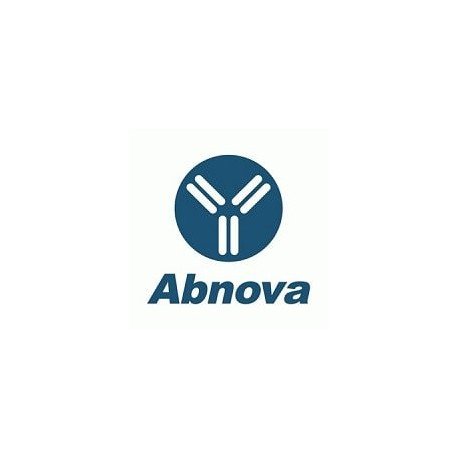Cart 0 Product Products (empty)
No products
To be determined Shipping
0,00 € Total
Prices are tax excluded
Product successfully added to your shopping cart
Quantity
Total
There are 0 items in your cart. There is 1 item in your cart.
Total products (tax excl.)
Total shipping (tax excl.) To be determined
Total (tax excl.)
Data sheet of RBL2 polyclonal antibody
| Brand | Abnova |
| Product type | Primary antibodies |
| Reactivity | Chimpanzee,Human,Orangutan |
| Host species | Rabbit |
| Applications | IP,ELISA,WB-Ce |
More info about RBL2 polyclonal antibody
| Brand: | Abnova |
| Reference: | PAB11266 |
| Product name: | RBL2 polyclonal antibody |
| Product description: | Rabbit polyclonal antibody raised against synthetic peptide of RBL2. |
| Gene id: | 5934 |
| Gene name: | RBL2 |
| Gene alias: | FLJ26459|P130|Rb2 |
| Gene description: | retinoblastoma-like 2 (p130) |
| Immunogen: | A synthetic peptide corresponding to the Spa310 domain of human RBL2. |
| Protein accession: | CAA52671;Q08999 |
| Form: | Liquid |
| Recommend dilutions: | ELISA (1:75000-1:100000) Western Blot (1:500-1:5000) The optimal working dilution should be determined by the end user. |
| Storage buffer: | In 20 mM KH2PO4, 150 mM NaCl, pH 7.2 (0.09% sodium azide) |
| Storage instruction: | Store at 4°C. For long term storage store at -20°C. Aliquot to avoid repeated freezing and thawing. |
| Quality control testing: | Antibody Reactive Against Synthetic Peptide. |
| Note: | This product contains sodium azide: a POISONOUS AND HAZARDOUS SUBSTANCE which should be handled by trained staff only. |
| Product type: | Primary antibodies |
| Host species: | Rabbit |
| Antigen species / target species: | Human |
| Specificity: | This antiserum is directed against Spa310 and reacts with the Spa3120 domain of pRb2/p130 from human tissues. |
| Reactivity: | Chimpanzee,Human,Orangutan |
| Application image: |  |
| Application image note: | Western blot using RBL2 polyclonal antibody (Cat # PAB11266) shows detection of endogenous RBL2 protein in whole LNCaP cell extracts. The band at ~130 KDa (arrowhead). The primary antibody was diluted 1 : 500. Personal communication, Ang Sun, Sbarro Institute for Cancer Research and Molecular Medicine, Temple University, Philadelphia, PA. |
| Applications: | IP,ELISA,WB-Ce |
| Shipping condition: | Dry Ice |
| Publications: | From G0 to S phase: a view of the roles played by the retinoblastoma (Rb) family members in the Rb-E2F pathway.Sun A, Bagella L, Tutton S, Romano G, Giordano A. J Cell Biochem. 2007 Dec 15;102(6):1400-4. |


